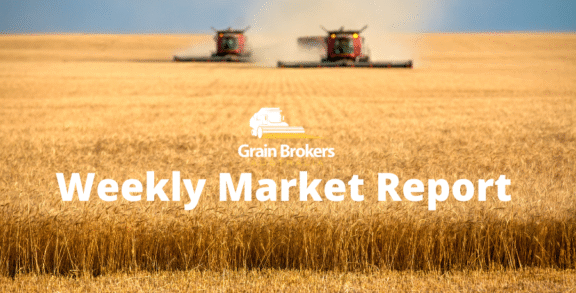
Barley Bites Back…
27th November, 2018
Weather delays may have been playing havoc with the Western Australian harvest thus far, nonetheless, grain receivals have skyrocketed to exceed 2.6 million metric tonne (mmt) for the week ending last Thursday. This brings total harvest deliveries to just under 5mmt (on par with the same time last year), or around 31 per cent of the total expected production for the state.
The Geraldton zone is by far the most advanced with around 58 per cent of anticipated production now in the bin. The Kwinana zone is sitting at approximately 31 per cent completed followed by the Esperance zone at about 23 per cent and the Albany zone, who are only just getting started, with roughly 12 per cent of anticipated production already delivered.
On the wheat quality front, three trends have been noticeable since the harvest commenced. Firstly, the proportion of the wheat crop being binned as Australian Hard (AH) has been gradually decreasing and is now sitting at around 8 per cent of the 1.6 mmt deliveries to last Thursday.
Secondly, the Australian Premium White (APW) share has also been slowly decreasing and is now representing just over 32 per cent of the wheat harvested. Thirdly, the decrease in AH and APW receivals is being reflected in an almost equal increase in the Australian Standard White (ASW) portion of the total Western Australian wheat crop which is now level pegging with APW at slightly more than 32 per cent of deliveries.
The Western Australian canola harvest has passed the halfway point with just under 900,000 metric tonnes delivered by close of business last Thursday. This represents around 60 per cent of anticipated production. Most noticeable in the numbers has been the decreasing proportion of GM canola being delivered into the system as the headers move south.
However, this is not unexpected as the concentration of GM canola plantings is certainly higher in the Geraldton zone and the northern reaches of the Kwinana zone. GM canola deliveries are currently running at around 38 per cent of receivals and will probably end up at around 25 per cent assuming the current trend continues.
One pleasing trend is the increasing malting barley selection rate as the harvest progresses in WA. While I expect that this includes both Malt1 and Malt2 grades, the proportion of receivals classified as malting barley has increased to around 32 per cent last week after being as low as 23 per cent about ten days earlier.
I expect that this reflects two things. Sowing of a lower proportional area to malting barley varieties in the Geraldton zone (where the barley harvest is almost complete) and improving barley quality as the harvest moves south into the Kwinana, Albany and Esperance zones.
Barley has been hogging the headlines this week with China launching an anti-dumping investigation against Australia regarding barley sales into the Chinese market. China is currently the biggest destination for Australian barley exports, taking in excess of 5mmt from the record 2016/17 harvest.
Dumping is the act of charging a lower price in a foreign market than is being charged for the same product in the exporters domestic market. It is consequently considered an unfair trade practice giving the exporter a competitive advantage into the destination market.
This is the first time China has initiated such action against Australia. However, its sophistication in the use of such measures, primarily in retaliation, is proving a nightmare for the European Union (EU) and the United States (US), as ‘The Don’ is discovering.
Is it simply a shot across our bow or are they deadly serious?
While not perfect, Australia takes pride in its pursuit of a free and open global trading environment. The domestic grain market has been deregulated for a number of years now and Australia basically sells its barley to the highest bidder, be that a domestic or an international customer.
In a year when Australia’s exportable surplus of barley has been cut to as low as 3mmt due to severe drought in the eastern states, dumping into the Chinese market at the expense of the hungry domestic consumer is not going to happen.
If the investigation is not withdrawn it will most likely take at least a year to conclude. However, under the World Trade Organization (WTO) rules, Beijing can impose duties after only 60 days. They could effectively restrict Australian barley imports and buy their requirements from other global suppliers if they so desired.
One thing is for certain, this is not a game in which Australia wants to participate. We need to avoid getting dragged into sanction fights such as we are presently seeing between the US and China.
No doubt the grain industry will to work cooperatively with the Chinese and Australian governments to seek a positive outcome for all market participants.
Peter McMeekin is a consultant to Grain Brokers Australia. Call 1300 946 544 to discuss your grain marketing needs.





